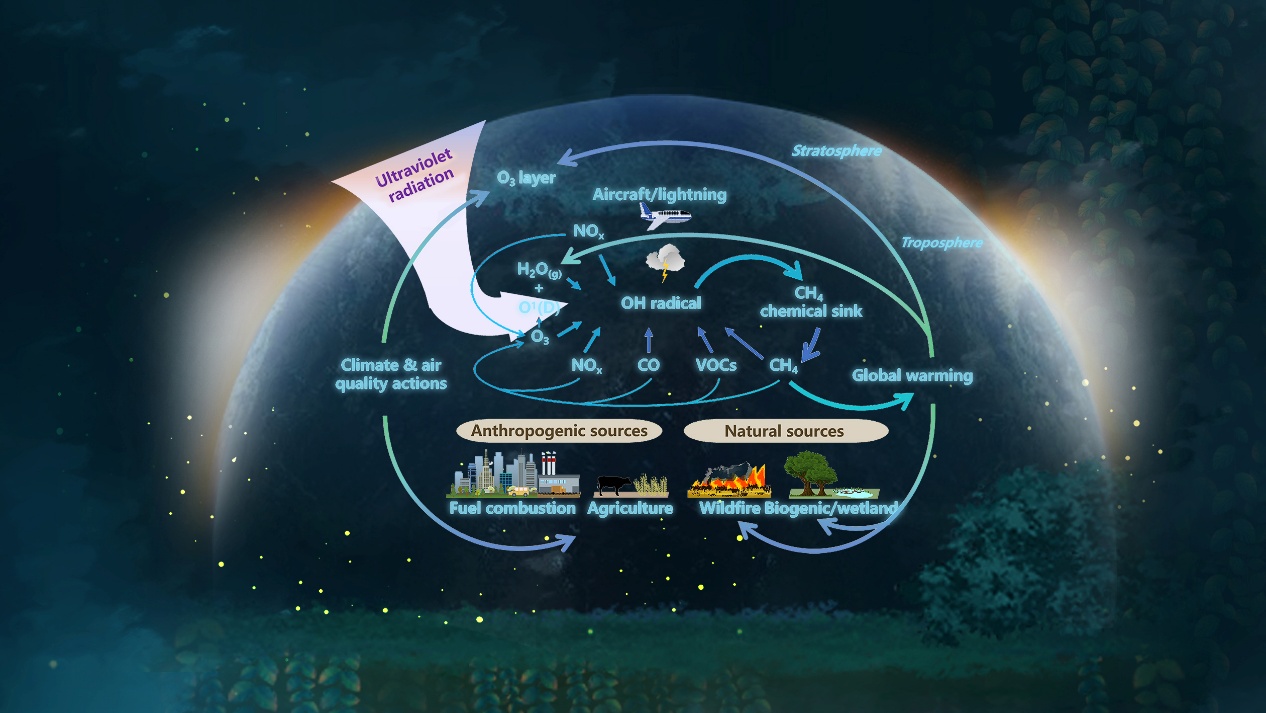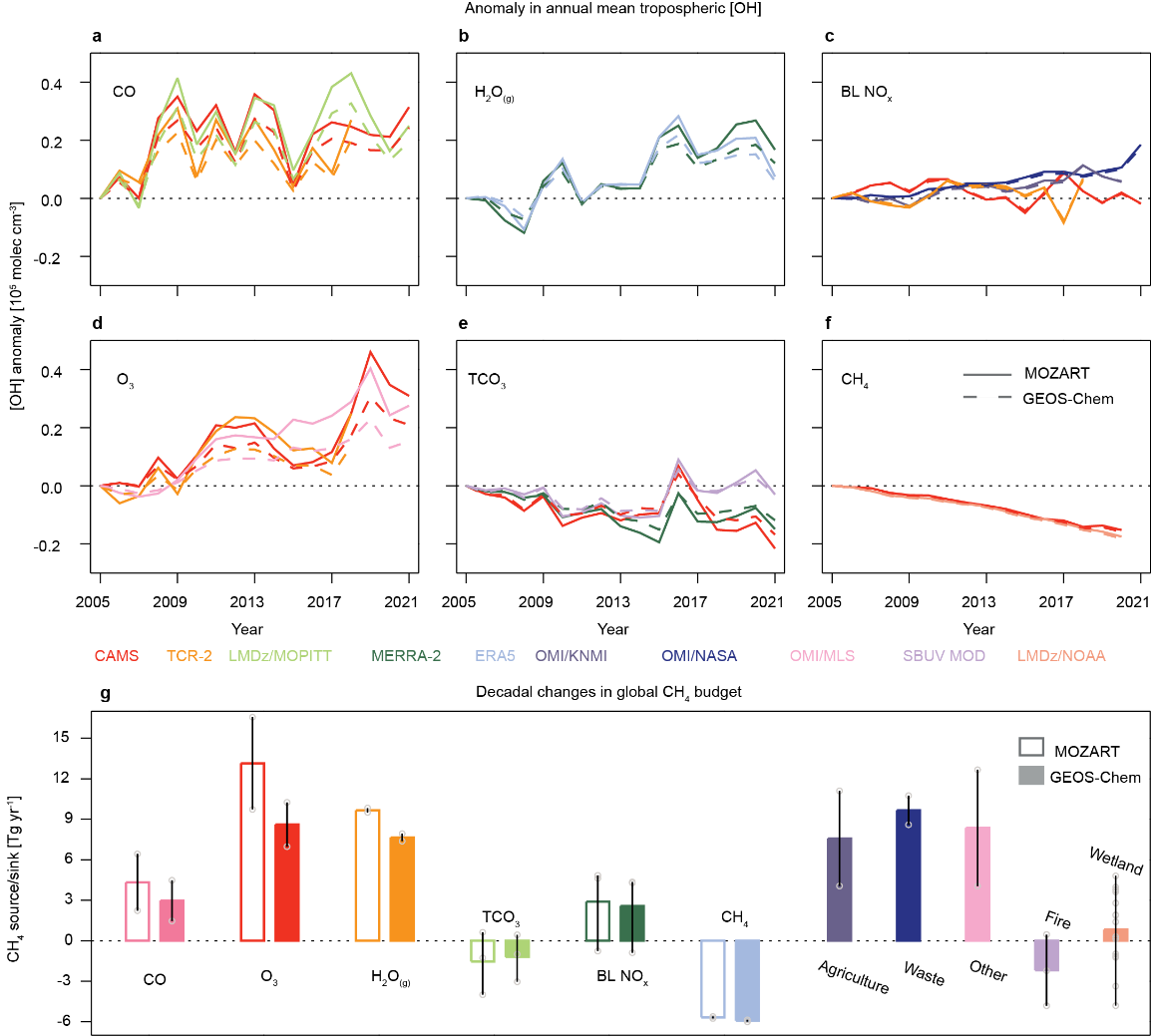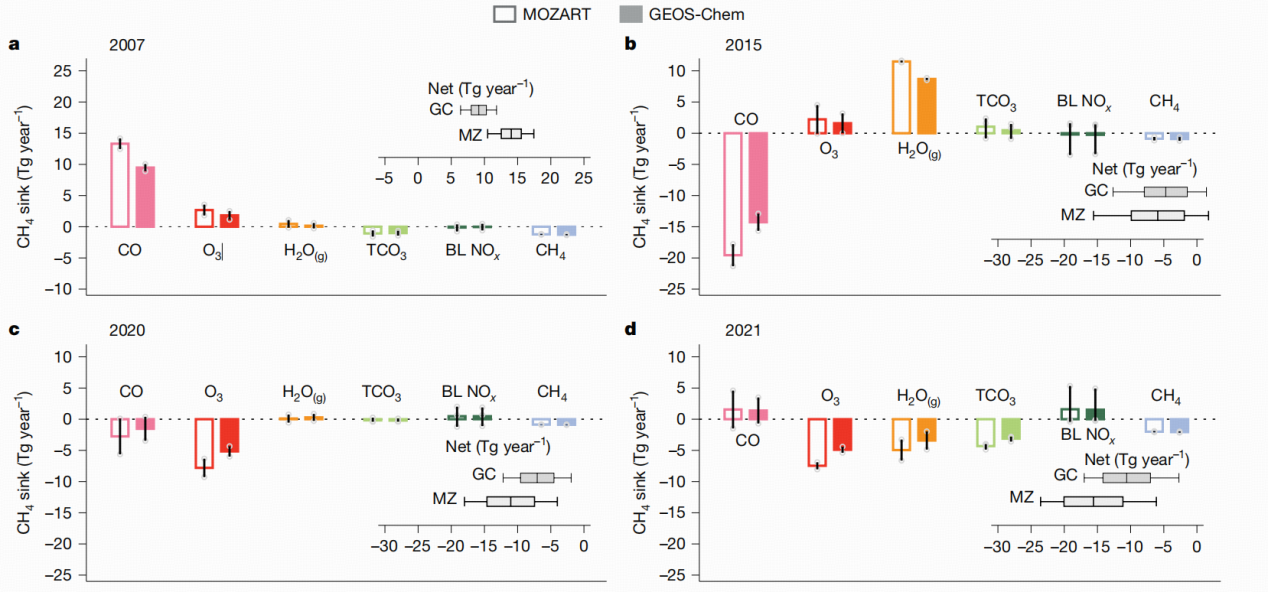
On May 28, 2025, Associate Professor Zheng Bo from the Institute of Environment and Ecology at Tsinghua Shenzhen International Graduate School (Tsinghua SIGS), leading an international research team comprising scholars from China, France, and Germany, published a study titled “Air pollution modulates trends and variability of the global methane budget” in Nature. The research systematically reveals how air pollution influences the global methane (CH₄) budget by modulating atmospheric hydroxyl radical (OH) concentrations, providing a new theoretical foundation for addressing global climate change and synergistically advancing pollution reduction and carbon mitigation.
Addressing the Major Challenge in Global Climate Change Research
Since the 21st century, climate change has evolved from an environmental issue to a critical factor affecting global security, economy, and societal stability. As the second-largest greenhouse gas after carbon dioxide (CO₂), CH₄ concentrations significantly impact the climate system. In recent years, the rapid rise in global CH₄ levels has drawn attention to its source-sink dynamics and regulatory mechanisms. The global CH₄ budget is not only influenced by natural emissions and anthropogenic activities but also involves complex interactions with air pollution.
Global atmospheric CH₄ concentrations have surged since 2007. Beyond natural and anthropogenic CH₄ emissions from wetlands, energy production, agriculture, and waste management, atmospheric oxidation processes, particularly the removal of CH₄ by OH, are also key regulators of its concentration. OH is the primary oxidant in the atmosphere and accounts for approximately 90% of CH₄ chemical consumption. However, long-term quantification of how air pollutants influence global OH levels and CH₄ budgets over decadal scales remains limited. Conventional studies often solely rely on observation datasets or atmospheric model simulations, which struggle to fully capture the complex dynamic interactions between air pollutants, OH concentrations, and CH4 sinks.
Deciphering the Complex Interactions Between Air Pollution and CH₄ Budget
This study innovatively developed an integrated research framework coupling atmospheric observations with process-based models to quantify the impacts of major air pollutants on CH₄ chemical sink. Utilizing advanced atmospheric chemistry models, multi-source atmospheric composition observations, reanalysis data, and sensitivity experiments of chemical box models, the team constructed response functions of OH to precursor concentration changes. They systematically analyzed the spatio-temporal variations of key OH precursors—including carbon monoxide (CO), ozone(O₃), water vapor (H₂O(g)), nitrogen oxides (NOx), and total column ozone (TCO₃)—from 2005 to 2021, and their systemic effects on global OH concentrations and CH₄ budgets(Fig.1). This approach not only accounts for long-term global scale trends but also addresses spatio-temporal heterogeneity, offering a novel insight into air pollution-CH₄ budget interactions.

Fig. 1 Changes in global tropospheric OH concentrations and CH4 sinks driven by OH radical precursors
The study found that from 2005 to 2021, enhanced tropospheric ozone, increased water vapour, and decreased carbon monoxide levels collectively contributed to a significant increase in global mean OH concentrations of 0.2% to 0.4%. (Fig. 1a-d). These changes collectively enhanced the global CH₄ sink by 1.3-2.0 Tg/yr², substantially buffering the atmospheric CH₄ growth rate. Notably, this sink enhancement was concentrated in tropical regions and exhibited pronounced hemispheric asymmetry. In mid-to-high latitudes of the Northern Hemisphere, OH and CH₄ sink variations were more influenced by anthropogenic activities. Such global-regional synergistic analysis provides scientific support for targeted air quality and climate policies.
The research also highlighted that during extreme events, such as the super El Niño event in 2015–2016 and the COVID-19 lockdown in 2020–2021, drastic air pollutant fluctuations caused significant impacts on OH and CH₄ sink in a short time. For instance, during the El Niño event, tropical wildfires spiked CO concentrations, depleting the OH, weakening the CH₄ sink, and elevating atmospheric CH₄ levels (Fig. 2b). During the COVID-19 lockdown, reduced human activities lowered O₃ concentrations, decreasing OH levels and CH₄ sink (Fig. 2c-d). This partially offset the slowed CH₄ growth caused by reduced anthropogenic CH₄ emissions, stimulating the global CH₄ concentration rise.

Fig. 2 Contributions of individual OH precursors to global CH4 sink changes during unusual years
Navigating Strategic Pathways for Global Climate Change Mitigation
The study reveals the need to integrate the synergies between global air pollution and CH₄ budget when implementing air quality and climate policies. For example, while reducing O₃ pollution improves air quality, it may lower OH concentrations, weaken CH₄ oxidation sink, and inadvertently elevate CH₄ levels. Future strategies must systematically assess the impacts of air pollutant reductions on CH₄ budgets to achieve co-benefits for air quality and climate targets. This requires considering interactions between emission sources and sinks in pollution and carbon mitigation policies.

Fig. 3 Complex interactions between air pollution and OH and CH4 budget
The research also provides a novel tool for monitoring and evaluating global OH concentrations and their effects on CH₄ sink. By regularly updating input driver data, the developed model system can track spatiotemporal OH variations, enabling dynamic studies of its regulatory role in the global CH₄ budget. This advancement holds practical significance for formulating science-based climate policies.
The corresponding author of the study is Associate Professor Zheng Bo from Tsinghua SIGS. The first author is Associate Professor Zhao Yuanhong from Ocean University of China. Co-authors include Philippe Ciais, a foreign academician of the Chinese Academy of Sciences, Distinguished Visiting Professor at Tsinghua University, and researcher at the Laboratory for Sciences of Climate and Environment (LSCE) in France; collaborators from LSCE, Forschungszentrum Jülich in Germany; and graduate students from Ocean University of China and Tsinghua SIGS. The research was supported by the National Natural Science Foundation of China, Shenzhen Key Laboratory of Ecological Remediation and Carbon Sequestration, and Shandong Provincial Natural Science Foundation.
Article Link: https://www.nature.com/articles/s41586-025-09004-z
From Tsinghua SIGS
Editor: Li Han

